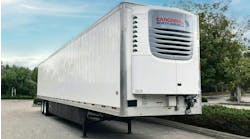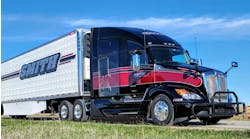Eight state Departments of Transportation hosted elected and appointed officials meetings and open houses during February and March 2002 as part of the National I-10 (Interstate 10) Freight Corridor Study. This study will analyze multimodal transportation needs and develop a plan for improving the I-10 Corridor.
Meetings and public open houses were held in 14 locations: Los Angeles and San Bernardino CA; Phoenix and Tucson AZ; Las Cruces NM; El Paso, San Antonio, and Houston TX; Baton Rouge, Kenner/New Orleans LA; Gulfport and Mobile MS; and Tallahassee and Jacksonville FL.
Issues discussed at the meetings included:
-
The National I-10 Freight Corridor Study should be coordinated with other recent and ongoing transportation studies along the corridor.
-
Roadway maintenance needs to be a high priority along I-10 and alternative and connecting routes used by freight carriers and other vehicles.
-
Safety of local communities, motorists, and truckers needs to be part of the study. Safety issues include traffic congestion, the mix of truck and passenger vehicles, environmental concerns such as air quality/pollution and noise, and the impact on neighborhoods. Also mentioned was the need for improved truck routes and alternative routes, or truck-only lanes with additional rest areas or parking areas along the route for truckers.
-
The multimodal aspects of how freight is and can be transported to increase efficiency, economy, and reliability should be a focus of the study. This includes the concept of “inland ports” or “freight villages,” a combined virtual warehouse facility for intermodal transportation located outside the urban area. The study should look at the opportunities to use air, rail, barge, and marine transport and consider ways to improve roadway linkages to these freight facilities. Ports of entry, border interests, and United States/Mexico trade should be included in the study.
-
An effort should be made to preserve transportation corridors for future needs. Neighborhoods, critical natural habitat, or other factors restrict the ability to expand I-10 in certain locations. Relief routes that avoid these areas or congested metropolitan areas should be considered.
-
The importance of the I-10 corridor to trade and the economy of the United States and the world were noted.
Summaries of the meetings at each site are available at the study's web site at www.i10freightstudy.org.


